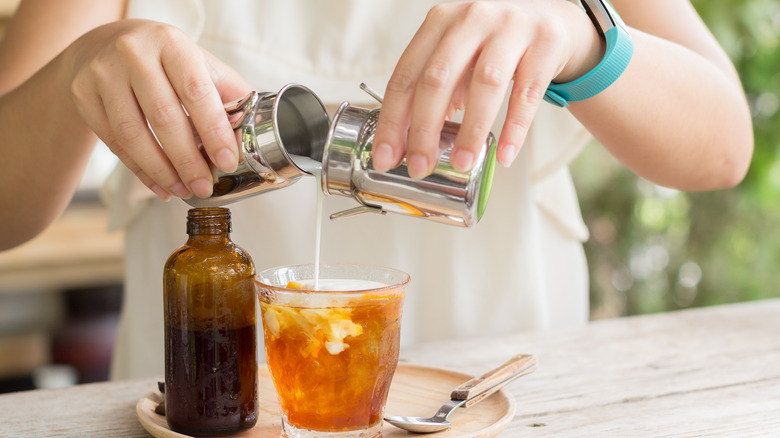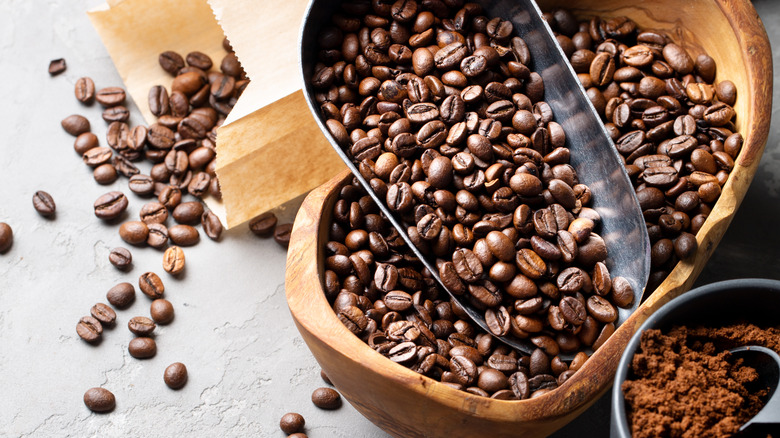Why Cold Brew Coffee Isn't Always Stronger Than Regular Coffee
With almost 28,000 branded coffee shops in the U.S. as of 2017, and approximately half belonging to Starbucks, it's no surprise that coffee consumption is more refined and personal than ever before (via BBC). And America is far from being the highest java consumer on the world stage — that honor belongs to Europe with the top 10 coffee-drinking countries, led by Finland and Sweden. But does all this coffee-guzzling across the globe indicate stronger brew preferences and higher amounts of caffeine per cup?
Well, that depends on how you make or order it. Options parade across coffee-shop boards like endless ribbons on a kite, waving names like piccolo latte, flat white, cortado, ristretto, and espresso macchiato. And then there's the often-misunderstood cold brew. Rumors hold that cold-brewing methods result in power-packed percentages of caffeine and much stronger cup concentrations. There's some truth to that if you look only at the bean-to-brew process, but it's more nuanced by the time it reaches your coffee cup, explains Kaldi's Coffee.
Cold brew is all about concentration and bean extraction
Cold brew coffee differs from standard drip coffee primarily by the absence of heat. While bean extraction typically comes from heated water, the aptly named cold brew method leaves coffee beans steeping in cold or room-temperature water for eight to 24 hours, according to Healthline. The result is a much stronger flavor that's more acidic and more concentrated. That's because cold brews have a considerably higher ratio of coffee beans to water.
Kaldi's Coffee explains that drip coffee ratios range from one part coffee beans to 18 or 20 parts water, while typical cold brews pack bean-to-water concentrations of 1:4 to 1:8. That's a whole lot of caffeine. But here's the kicker — the reality of anyone drinking cold-brew coffee concentrate is almost nonexistent. After adding water, ice, cream, soy milk, dairy flavoring, or similar, caffeine percentages in your cup go way down. In fact, Healthline states that 16 ounces of cold brew coffee carry about 200 milligrams of caffeine, depending on variables such as bean type, grind, and brewing time. That's comparable to hot brewed coffee, even though hot water extracts more caffeine from beans.
Options abound, and cup-to-cup comparisons are problematic. But if you want to add or subtract caffeine or flavor strength from cold or hot brews, target the process itself, explains Coffee Confidential. Experiment with water-to-bean ratios, use coarse rather than fine grinds, or choose beans with less caffeine. Regardless, just find your java rhythm and enjoy the buzz!

